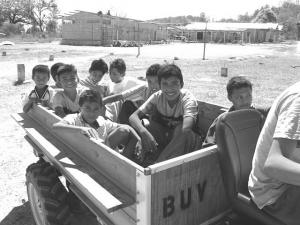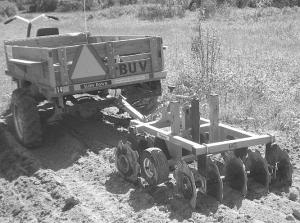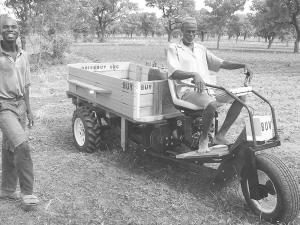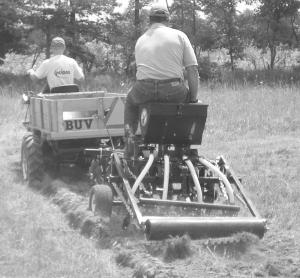2011 - Volume #35, Issue #2, Page #24
[ Sample Stories From This Issue | List of All Stories In This Issue | Print this story
| Read this issue]
Basic "ATV" Changes Lives In Poor Countries
 |
 |
 |
 |
The BUV is the brainchild of Will Austin, a mechanical engineer who worked at General Motors, Ford and Delco Electronics before "The Lord laid this on my heart" during a fly-fishing trip to South America in 1998.
After several trips to impoverished countries, he realized how much the quality of life depends on affordable transportation. Austin began working on prototypes. In 2005, his non-profit charity, the Institute for Affordable Transportation (IAT), sent its first production BUV to Honduras. That first one is still running thanks to the simple, but overbuilt, design.
BUV's excel in rough driving conditions. They carry up to 1,200 lbs., cost 1/5 the cost of a typical economy car, and travel at less than 20 mph. With attachments, a parked BUV can pump water, grind grain, generate electricity, or power other machines that can be driven by a V-belt. They can also cultivate, ditch and work gardens and fields with tillage attachments.
Starting at $3,700 for a rolling chassis with no bed to $5,000 for a complete unit with upgrade options, BUV's are generally purchased for mission and humanitarian organizations. IAT works with groups to send the BUV's in shipping containers to keep transportation costs as low as possible.
"In general, we expect each BUV to touch more than 1,000 people," says Austin. "Instead of hauling water and wood all day, women and children can grow food or go to school. BUV's can be made into ambulances to take people to clinics since most people in rural Africa have to walk more than 5 miles to reach the nearest doctor."
With a BUV, prices on goods are lower because of less expensive freight costs, and growers can get their goods to better paying markets. Materials for construction projects - water, sand, concrete - can be delivered faster and easier.
Austin envisions that people will gain dignity, self-confidence and become entrepreneurs with BUV's. While transportation has been the biggest use for them, they can also be fitted with tractor-style tires for farming and logging
"It'll go where other 4x4 trucks get stuck. It has very high torque," Austin says. "The components are simple because we wanted a vehicle that people could make their own parts for if necessary."
The BUV's are built in Indianapolis by four paid staff and many volunteers. Donors pay for overhead and salaries, including Austin's - just as missionaries are often required to raise their own pay. Austin's ultimate goal is to set up assembly factories in other countries, such as the one already established in South Africa. That way the BUV will also provide jobs and income for local people.
BUV's have a 10 hp diesel engine that gets anywhere from 30 to 60 mpg depending on terrain and load. They weigh 1,200 lbs. with a treated lumber 6-ft. long cargo bed. The front spindle/hub is rated at 1,750 lbs., and the axles are designed for 250 hp engines. They are simple to drive - middle steering and no shifting or clutch. They don't have a powered reverse, but pivot around easily and can be pushed manually.
So far, about 115 BUV's have been shipped to Africa, Haiti and Central America as Austin's organization builds awareness and excitement about the vehicle's capabilities.
"This is a hand-up, not a hand-out," he says. "BUV's empower people economically and spiritually. They help people help themselves. Providing transportation bridges a gap and helps connect people."
Contact: FARM SHOW Followup, Will Austin, Institute for Affordable Transportation, 5868 E. 71st St., Suite E-199, Indianapolis, Ind.á 46220 (ph 317 213-1088;
will.austin@driveBUV.org; www.drivebuv.org).
How to Help:
• Donate to IAT, a 501(c)3 charity to help cover overhead costs.
• Raise money with friends or your church to send a BUV to a missionary.
• Volunteer at the Indianapolis factory.
• Donate your car or truck.
• Take a BUV on tour to various car shows in your area.

Click here to download page story appeared in.

Click here to read entire issue
To read the rest of this story, download this issue below or click here to register with your account number.




